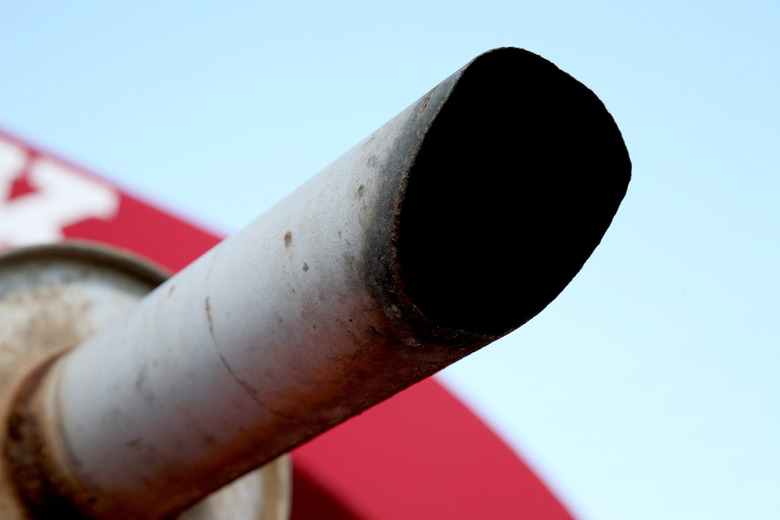My Riding Mower Backfires & Has A Loss Of Power
Riding lawn mowers with small combustion engines are designed to ignite fuel vapors for power. That can be a problem, however, if fuel vapors aren't ignited inside the combustion chamber. The end result is a loud pop, also known as backfire. If you hear this as your engine loses power or during operation, it's time to inspect fuel and ignition-related systems.
Timing
Your riding mower engine's combustion process also starts with a spark. When the engine is started, the flywheel magnet generates electricity to the engine coil. The coil is connected to the spark plug, which emits the electrical charge to the fuel vapors just as the valves close. Once the fuel vapor is ignited, the valves open again and allow the combusted air to power the engine. If the spark is generated off time, this ignition may not happen until the vapors are outside the combustion chamber. Check the flywheel to ensure the magnets are adjusted properly or aren't missing. Also measure the spark gap according to the manual's specifications.
- Riding lawn mowers with small combustion engines are designed to ignite fuel vapors for power.
- If the spark is generated off time, this ignition may not happen until the vapors are outside the combustion chamber.
Fuel Mixture
The fuel mixture coming from the carburetor can cause a backfire in your riding mower. The carburetor is supposed to mix fuel with air at a specific ratio for combustion, according to your owner's manual. If there isn't enough fuel in the mixture, the vapor can travel through the combustion chamber and into the exhaust pipe or muffler. If both of those are warm enough, the fuel will ignite and cause a backfire. Check your carburetor to see if it's adjusted properly. Also inspect the choke to ensure it is opening all the way.
Engine Speed
If you experience a loss of engine power in your riding mower, there is a possibility of backfire. Losing engine power can drop the engine speed dramatically. If this happens too fast, the intake valves won't close fast enough to keep fuel vapors in the combustion chamber. Those vapors will instead ignite in the muffler or exhaust area. Check fuel and air filters for clogs to ensure they aren't causing the loss of power. Also consider your throttle to see if you are lowering your engine speed too fast.
- The fuel mixture coming from the carburetor can cause a backfire in your riding mower.
- If there isn't enough fuel in the mixture, the vapor can travel through the combustion chamber and into the exhaust pipe or muffler.
Safety Interlock
Many riding mowers have a safety interlock system that prevents engine operation unless certain conditions are met. This includes being seated on the mower while the blade is engaged or the engine is on. If you have the engine at full throttle and you suddenly leave the seat, the mower will shut off. That can cause the engine speed to drop dramatically and cause backfire, because fuel vapors have bypassed the combustion chamber and moved into the exhaust or muffler area.
